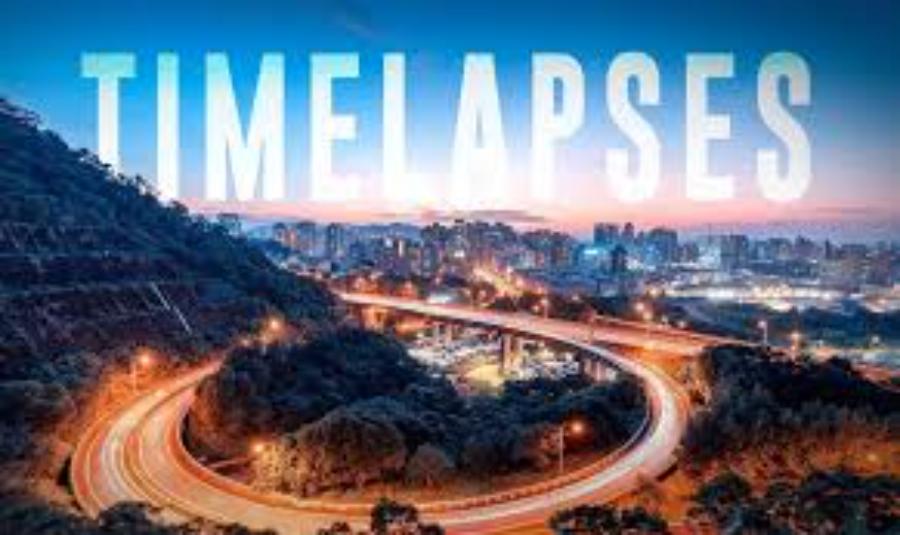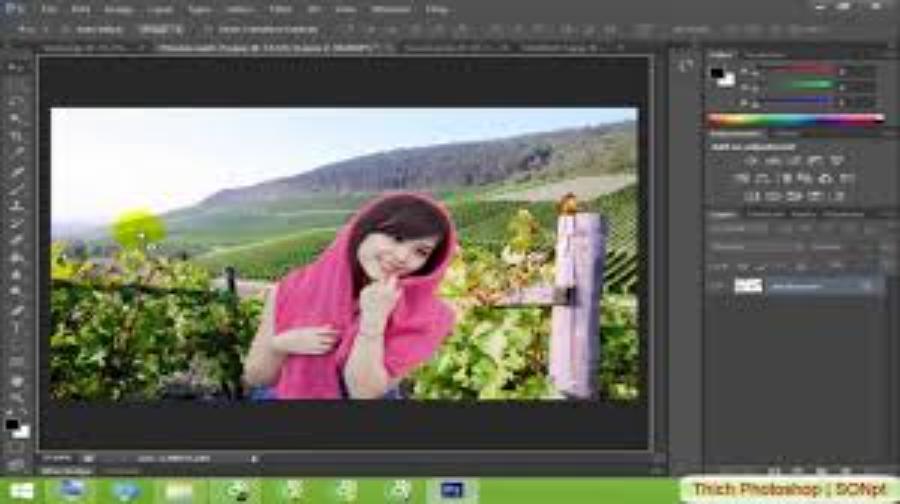Best Selling Products
Time-Lapse Exploration: How to Create Stunning Videos in Just a Few Steps
Nội dung
- 1.What is Time-Lapse?
- 2. Applications of Time-Lapse in life
- 2.1. Shooting natural and landscape scenes
- 2.2 Construction and execution process
- 2.3. Content production and creation
- 2.4. Scientific research and education
- 2.5 Environmental monitoring and climate change
- 2.6. Applications in medicine
- 2.7. Entertainment and tourism
- 3. Steps to create impressive Time-Lapse videos
- 3.1 Step 1: Plan and choose the scene
- 3.2 Step 2: Choose the right device
- 3.3 Step 3: Install the camera and configure Time-Lapse mode
- 3.4 Step 4: Record and monitor the process
- 3.5 Step 5: Edit and edit video
- 3.6 Step 6: Export video and share
- 4. Notes when creating Time-Lapse videos
- 5. Conclusion
Discover Time-Lapse, a video recording method that captures the change of time in a dramatic way. Learn the simple steps to create quality Time-Lapse videos at home.

Time-Lapse is a video recording technique that allows you to record the changes of objects and phenomena over time in the form of fast-paced videos. This technique is increasingly popular in many fields from art, advertising to education. In this article, sadesign will explain what is Time-Lapse? And guide you through simple steps to create an impressive Time-Lapse video.
1.What is Time-Lapse?
Time-Lapse is a photography or videography technique used to record events that take place over a long period of time and then play them back at a much faster rate than they actually happened. This technique is often used to show changes or slow motion that are difficult to see with the naked eye, such as the blooming of flowers, the movement of clouds, or the change in light during the day. By taking a series of frames at a certain time interval and combining them into a video, Time-Lapse creates impressive, artistic and scientific footage. This is a popular tool in the fields of photography, cinematography, and even scientific research.
.jpg)
The main feature of Time-Lapse is that it is played back faster than real life. This allows the audience to easily recognize movements and changes over a long period of time without having to wait too long. This makes Time-Lapse a powerful storytelling tool, showing the beauty of nature and long-term processes that we cannot see with the naked eye.
2. Applications of Time-Lapse in life
Time-Lapse is not only used in movies or art videos but also very popular in daily life and various fields. Below are some outstanding applications of this technique:
2.1. Shooting natural and landscape scenes
Time-Lapse is often used to capture changes in natural landscapes such as cloud movement, sunrise or sunset. Using Time-Lapse allows viewers to enjoy the beauty of nature in a short period of time, something that cannot be seen with the naked eye.
2.2 Construction and execution process
Another prominent use of Time-Lapse is to record the construction process of large projects, from architectural structures to infrastructure projects. These videos allow viewers to see the entire construction process, from start to finish, in a short period of time. This not only helps to manage projects more efficiently, but also provides important documentation for evaluating and improving workflows.
Additionally, construction Time-Lapse videos can also be used as a promotional tool, helping to showcase a business's capabilities and reputation to potential customers.
2.3. Content production and creation
In the field of art, Time-Lapse has become a unique creative medium. Photographers and filmmakers use this technique to create impressive works, from sunrises and sunsets, to the movement of clouds in the sky or the bustle of a city at night. Time-Lapse footage not only brings a sense of magic but also helps viewers feel the change that they often miss in their daily lives.
.jpg)
2.4. Scientific research and education
Time-Lapse is widely used in scientific research to record natural phenomena that occur over long periods of time. For example, in biology, this technique helps to monitor plant growth, cell division, or other biological processes that cannot be directly observed with the naked eye. In astronomy, Time-Lapse helps to record the movement of stars, changes in the night sky, or solar and lunar eclipses.
2.5 Environmental monitoring and climate change
Time-Lapse photography plays an important role in observing and recording environmental changes. Scientists and environmentalists use this technique to monitor the melting of polar ice caps, the encroachment of deserts, and changes in sea levels. These images not only provide valuable data for research but also raise public awareness about climate change and environmental protection.
2.6. Applications in medicine
In medicine, Time-Lapse is used to monitor microscopic processes such as embryo development in artificial insemination (IVF). This technique allows doctors to observe each stage of embryo development in detail without direct intervention, thereby making more accurate decisions in treatment.
2.7. Entertainment and tourism
In the tourism industry, Time-Lapse is used to promote the beauty of famous destinations. Videos recording sunsets on the sea, people passing by famous landmarks or the changing colors of nature with the seasons have a strong attraction for tourists.
In the entertainment industry, Time-Lapse videos often appear in movies, TV shows or social media content, creating interesting and novel moments for the audience.
3. Steps to create impressive Time-Lapse videos
Creating a Time-Lapse video is not difficult if you know the basic steps and have the right equipment. Below is a detailed guide on the steps to follow to create a quality Time-Lapse video.
.jpg)
3.1 Step 1: Plan and choose the scene
Before you start shooting a Time-Lapse video, you need to do some careful planning. This includes choosing a location, shooting time, and other factors that can affect your video.
For example, if you want to shoot a sunrise or sunset, you need to time it specifically to capture the best moment. If you are shooting a growing scene, like trees or flowers, you need to make sure that the shot is long enough to show the change.
3.2 Step 2: Choose the right device
To create quality Time-Lapse videos, choosing the right equipment is very important. You can use a DSLR camera, a smartphone, or a professional camcorder. Here are some equipment suggestions:
DSLR or Mirrorless Camera : This is the best choice if you want to control the image quality and lighting. These cameras often have a built-in Time-Lapse function, making it easy to do.
Smartphone : If you don’t have a dedicated camera, your smartphone can also be a great option. Time-Lapse recording apps like Lapse It, TimeLapse Camera will make it easy for you.
Tripod : A sturdy tripod is essential to keep the camera steady during filming, avoiding shaky video.
3.3 Step 3: Install the camera and configure Time-Lapse mode
Once you have your equipment ready, you need to configure your camera to take Time-Lapse shots. For DSLR cameras, you can use Time-Lapse mode or set the number of shots and the interval between shots. For phones, simply select Time-Lapse mode in the video recording app.
Important parameters you need to pay attention to:
Shutter Speed : To get the Time-Lapse effect, you will need to set the time between each photo. Typically, 5-10 seconds is ideal.
Brightness and Aperture Settings : To ensure that the video is not too bright or dark, you need to adjust the aperture and brightness to suit the lighting conditions.
3.4 Step 4: Record and monitor the process
Once everything is ready, all you have to do is start recording and wait. Recording can take anywhere from a few hours to a few days, depending on the subject you choose. Throughout this process, you will need to monitor your equipment to make sure everything is working properly and without any interruptions.
3.5 Step 5: Edit and edit video
Once you've completed the shooting process, you'll have a bunch of raw photos or videos. The next step is to edit and edit the video to create the finished product.
Video editing software like Adobe Premiere Pro, Final Cut Pro, or mobile apps like InShot will help you combine photos into a smooth Time-Lapse video. You can edit the playback speed, add effects, sound or music to make the video more dynamic.
3.6 Step 6: Export video and share
Once your video is complete, you can export it as a standard video file like MP4 or MOV. You can then share your Time-Lapse video on platforms like YouTube, Instagram, Facebook, or Vimeo to share with your friends and community.
4. Notes when creating Time-Lapse videos
.jpg)
To get a truly impressive Time-Lapse video, you need to pay attention to the following factors:
Lighting : Lighting is the most important factor when shooting Time-Lapse. You need to have a stable light source to ensure the video is not too bright or too dark.
Choose engaging topics : Choose topics that change significantly over time to make your videos truly memorable.
Patience : Time-Lapse is a process that requires patience. Recording a video can take hours or days, so you need to be mentally prepared before you start.
5. Conclusion
Time-Lapse is a great technique for creating impressive videos that help you capture the change of time in a vivid and interesting way. With the simple steps we just shared, you can create beautiful Time-Lapse videos that attract attention and convey messages effectively. Don't hesitate to experiment and get creative with Time-Lapse - you will be surprised at what you can do!












































